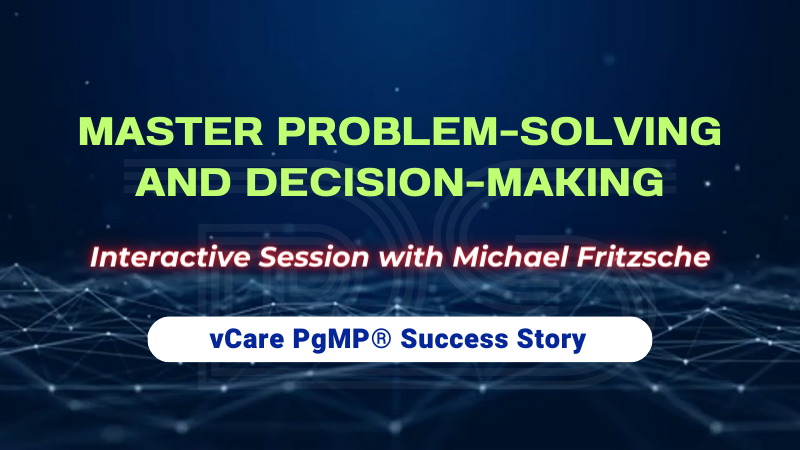
by admin | Mar 9, 2024 | Professional Development Webinars
Join me for an exclusive webinar where Michael Fritzsche, a distinguished Project, Program, and Portfolio Management professional in the automation industry from Rheinböllen, Rhineland-Palatinate, Germany, will share his journey and experiences, offering attendees a unique perspective on overcoming challenges and leading strategic projects.
Key topics to be covered include:
– Equipping Senior Managers for Strategic Decision-Making.
– The Dynamics of Human Judgment vs. Algorithms in Decision-Making.
– Best Practices for Building Stakeholder Trust and Credibility.
– Effective Use of Deadlines to Boost Productivity.
🔗 Reserve your spot now: https://bit.ly/3ON2Ibl
Session Date: 21st March 2024
Session Time: 09:30 AM – 10:30 AM (PDT) / 10:30 AM – 11:30 AM (MDT) / 11:30 – 12:30 PM (CDT) / 12:30 PM – 01:30 PM (EDT) / 01:30 PM – 02:30 PM (BRT) / 04:30 PM – 05:30 PM (GMT) / 05:30 PM – 06:30 PM (CET) / 07:30 PM – 08:30 PM (AST) / 08:30 PM – 09:30 PM (GST) / 10:00 PM – 11:30 PM (IST)
🚀 Elevate Your Project Management Career:
– Book an obligation-free consultation session on Project management Career, training, and certifications: http://talktodharam.com
– Discover training offers and certification discounts: https://bit.ly/3jWVepD
– Stay updated with our Q&A series and certification success stories by subscribing to the vCare Project Management YouTube channel at https://bit.ly/2YF0wJl
– Follow my podcasts and interviews with Project Management Experts on YouTube at https://bit.ly/2NDY8wd
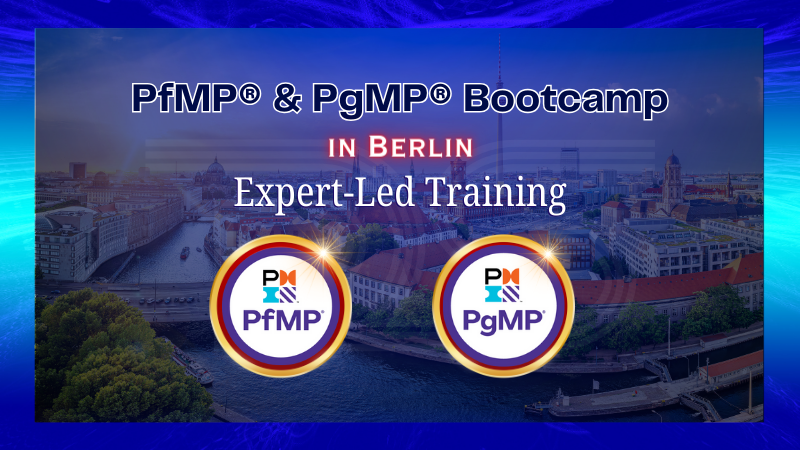
by admin | Mar 5, 2024 | Project-Program-Portfolio Management Knowledge
PgMP and PfMP Bootcamp | Berlin | Germany
Exciting update! I’ll be in Berlin this April 2024, leading specialized boot camps for PgMP and PfMP certifications. Join me for comprehensive training and guidance to excel in your certification journey. These boot camps are tailored to boost your Project, Program and Portfolio management skills. Use this opportunity to advance your career and embark on your path to success!
Here are the links for our upcoming sessions:
PgMP Berlin Bootcamp: April 07-09 – https://bit.ly/3upkUkf
PfMP Berlin Bootcamp: April 12-14 – https://bit.ly/3OrtQMS
Reach out to me for Exclusive Discounts ! ! !
🚀 Elevate Your Project Management Career:
– Register for my upcoming PgMP/PfMP Success Story Webinar: https://bit.ly/3ON2Ibl
– Book an obligation-free consultation session on Project management Career, training, and certifications: http://talktodharam.com
– Discover training offers and certification discounts: https://bit.ly/3jWVepD
– Stay updated with our Q&A series and certification success stories by subscribing to the vCare Project Management YouTube channel at https://bit.ly/2YF0wJl
– Follow my podcasts and interviews with Project Management Experts on YouTube at https://bit.ly/2NDY8wd
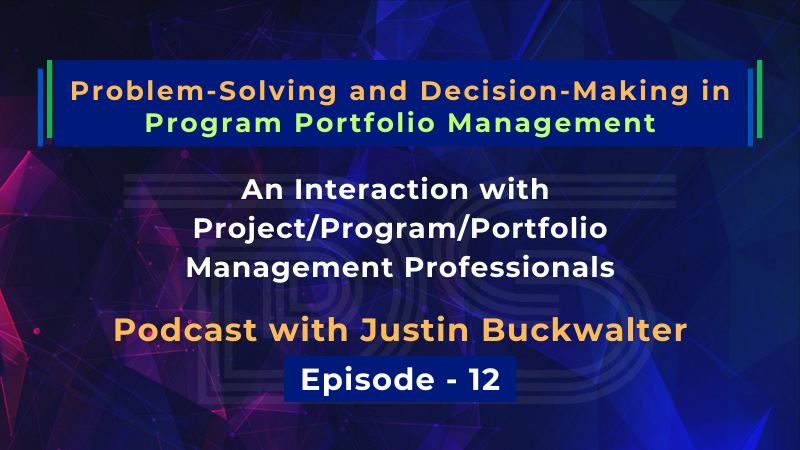
by DharamCW | Feb 19, 2024 | Program Management
Problem-Solving and Decision-Making in Program Portfolio Management | Justin Buckwalter | Episode 12
In a world where uncertainty is the only certainty, Problem Solving and Decision Making have never been more crucial for Program Management and Portfolio Management professionals. Join me for a stimulating discussion with Justin Buckwalter, PfMP, PgMP, PMP, PMI-ACP, PMI-RMP on Episode 12 of our series, exploring the frontiers of decision-making in the VUCA environment.
🔍 Episode Highlights:
– Does the adage ‘Too many cooks spoil the broth’ hold in project decision-making? We invite you to weigh in with your experiences.
– Uncover how Artificial Intelligence is reshaping our approach as Problem Solvers in the realm of program/portfolio management.
– Dive into strategies for navigating through economic uncertainty and making swift project decisions.
– Discuss overcoming behavioral biases and harnessing the power of Change Management and Risk Mitigation in sensitive projects.
👨💼 As Project Leaders, we must evolve, adapt, and often recover from decision-making mishaps. How do you pivot and keep the momentum going?
For a deep dive into these critical competencies that define the success of modern program/portfolio managers, tune into our conversation.
🚀 Elevate Your Project Management Career:
– Register for my upcoming PgMP/PfMP Success Story Webinar: https://bit.ly/3S53K3a
– Book an obligation-free consultation session on Project management Career, training, and certifications: http://talktodharam.com/
– Discover training offers and certification discounts: https://bit.ly/3jWVepD
– Stay updated with our Q&A series and certification success stories by subscribing to the vCare Project Management YouTube channel at https://bit.ly/2YF0wJl
– Follow my podcasts and interviews with Project Management Experts on YouTube at https://bit.ly/2NDY8wd
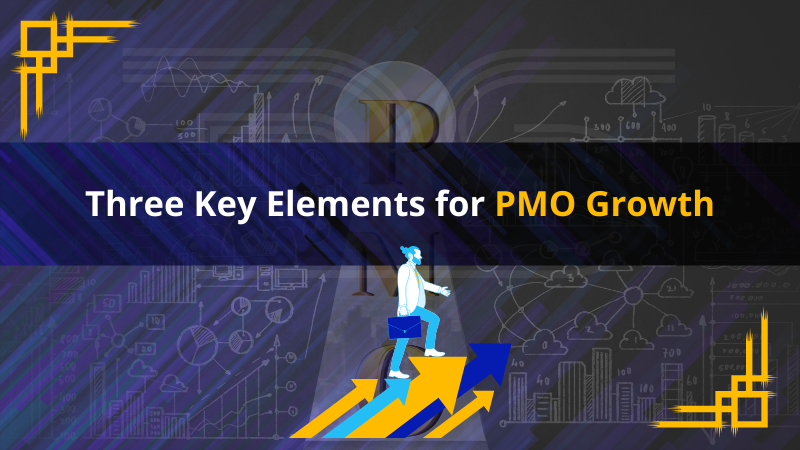
by DharamCW | Feb 17, 2024 | Project Management
Three Key Elements for PMO Growth
In the thrust of today’s dynamic business landscape, the imperative for Project Management Offices (PMOs) is not just to adapt but to lead the charge in transforming operations. Today, I want to talk about the pivotal role of Change Drivers in the evolution of PMOs.
The Three Pillars of PMO Evolution
1. Capacity & Skills: The bedrock of any thriving PMO, where deep domain expertise meets the agility to scale up operations swiftly.
2. Rapid Execution: With time a premium commodity, the ability to pivot and deliver at speed is non-negotiable for PMOs aiming to stay ahead of compliance curves and shifting market demands.
3. Innovation: Beyond traditional project management, the focus is now on creating value through Innovation In PM, fostering a culture of Continuous Improvement and Quality Management.
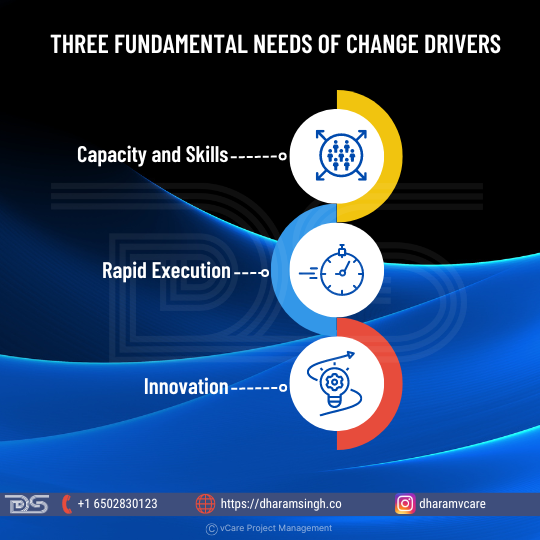
3 Fundamental needs of change drivers
🌟 As a trainer and mentor, I’ve observed that PMOs transitioning from traditional execution methods to these three core areas deliver value faster and embed resilience and a forward-thinking ethos into their DNA.
🔗 Embrace the shift and become a harbinger of change in your organization. For more insights into PMO strategy and project leadership, follow vCare Project Management.
🚀 Elevate Your Project Management Career:
– Register for my upcoming PgMP/PfMP Success Story Webinar: https://bit.ly/3S53K3a
– Book an obligation-free consultation session on Project management Career, training, and certifications: http://bit.ly/2SbhTOK
– Discover training offers and certification discounts: https://bit.ly/3jWVepD
– Stay updated with our Q&A series and certification success stories by subscribing to the vCare Project Management YouTube channel at https://bit.ly/2YF0wJl
– Follow my podcasts and interviews with Project Management Experts on YouTube at https://bit.ly/2NDY8wd
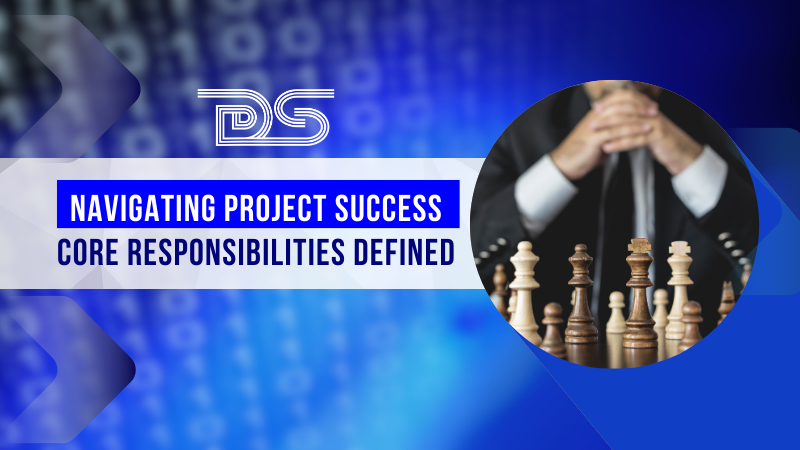
by DharamCW | Jan 23, 2024 | Project Management
Exploring the Multifaceted Role of a Project Manager
As we navigate the complexities of project management, understanding the core responsibilities of a Project Manager is key to success. I’m breaking down some critical duties that set exceptional Project Managers apart.
A Project Manager is the compass that guides a project’s journey, ensuring that every aspect aligns with the strategic vision:
🔍 Defining scope and deliverables in partnership with clients
📝 Tailoring project plans to dynamic business needs
🎯 Steering project strategies towards goal achievement
🤝 Fostering collaboration for seamless integration of activities
🛠 Managing resources and mitigating risks with precision
🔖 Upholding quality and adapting swiftly to project shifts
🗣 Communicating milestones and driving project reviews
📚 Establishing robust documentation processes
🚀 Orchestrating a strategic product release
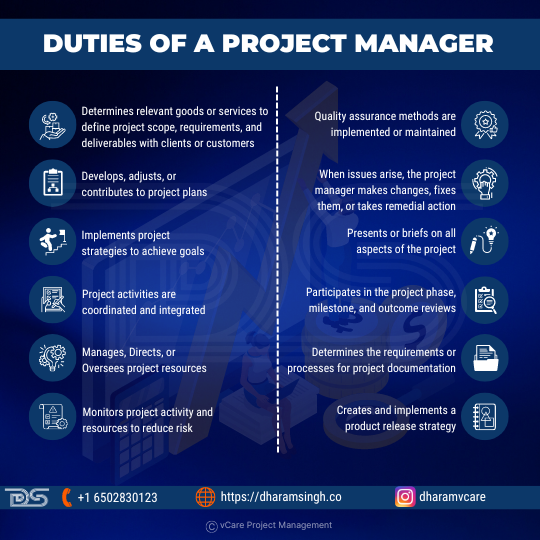
Duties of a Project Manager
These roles are not just tasks but the stepping stones to operational excellence and project triumph.
Let’s master the art of project management together!
Elevate Your Project Management Career:
– Book an obligation-free consultation session on Project Management career, training, and certifications: http://bit.ly/2SbhTOK
– Stay updated: Subscribe to our YouTube Channels for more insights: https://bit.ly/2YF0wJl and expert interviews: https://bit.ly/2NDY8wd
– Discover training offers and certification discounts: https://bit.ly/3jWVepD




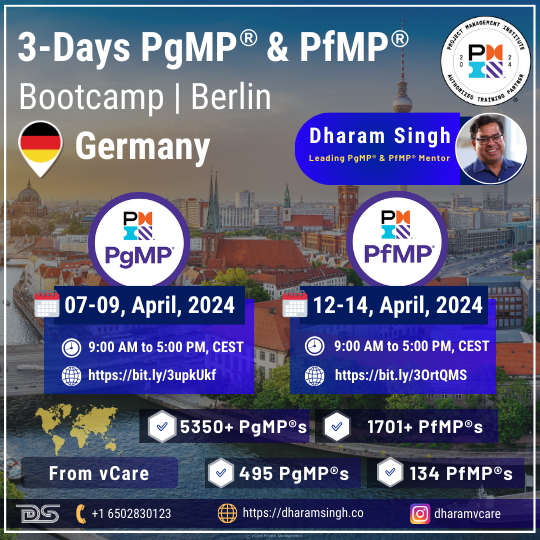






Recent Comments